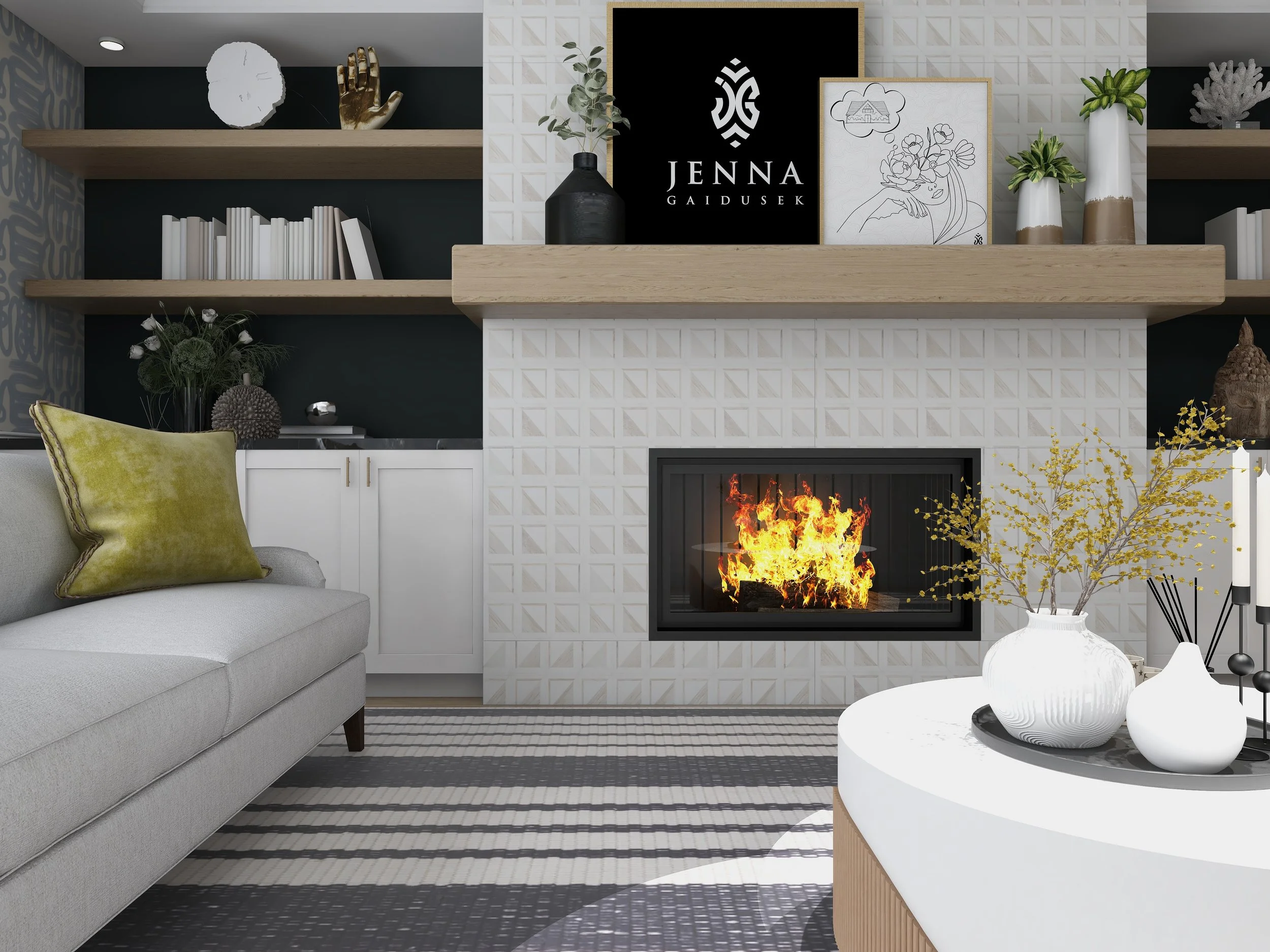Top 7 reasons you should be using peel-and-stick wallpaper in your home
Plus Install instructions and my top designer picks for 2023!
As an interior designer, I see a lot of requests for unique and “stand out” backgrounds for social media, business, and video conferencing. Personalized homes with the ability to change in the future (because a lot of us have design ADHD and love to change our decor with the season) is a necessity these days. Choosing the right wallpaper for your "feature wall” or background is like searching for a piece of your identity. You want something that conveys who you are when you share pictures or videos in front of it. Do you want your wallpaper to represent your fun and whimsical side? Do you want to come across as more serious and professional? Your wallpaper choice says a lot about you!
Don’t worry, I’ve got you covered on where to start with my Wallpaper Styling Digital Magazine. Check out my top 25 favorite peel-and-stick wallpapers for 2023.
While you are here, check out all the reasons why you should have this somewhere in your home. Learn how to install a peel-and-stick wallpaper, what walls it won't work on, and other super insightful information for your next project.
Wallpaper is a convenient and cost-effective option for those looking to update the look of their home without committing to a permanent change. It can be used in a variety of rooms, including bedrooms, bathrooms, and kitchens, and it can be a great way to add a pop of color or pattern to a space. Additionally, it is a good option for renters who want to add their personal touch to a rental property without making permanent changes. Overall, it's a great alternative to traditional wallpaper and paint.
Top 7 Reasons to use a peel and stick wallpaper in your home:
Ease of installation: Peel and stick wallpaper can be easily applied to walls without the need for messy adhesives or special tools.
Removable: This type of wallpaper can be removed without damaging the walls or leaving residue.
Versatility: Peel and stick wallpaper can be used on a variety of surfaces, including walls, furniture, and even ceilings.
Cost-effective: Peel-and-stick wallpaper is generally less expensive than traditional wallpaper and paint.
Variety of designs: Peel and stick wallpaper is available in a wide range of designs and patterns, from traditional to modern, so you can easily find something to fit your personal style.
Low maintenance: Once applied, it is easy to clean and maintain, making it a great option for high-traffic areas or for renters.
Time-saving: It takes less time to install than traditional wallpaper and you can easily change it up as your style evolves or if you move.
How to apply peel-and-stick wallpaper
Prepare the surface: Clean the wall or surface that you will be applying the wallpaper to, making sure it is free of dust, debris, and grease.
Measure the wall: Measure the length and width of the wall or surface to determine how much wallpaper you will need. Add an extra inch or two to your measurements to allow for trimming.
Cut the wallpaper: Cut the wallpaper to the correct size for your wall or surface.
Align the wallpaper: Place the wallpaper against the wall or surface, aligning the top edge with the ceiling or reference point.
Peel off the backing: Carefully peel off the backing of the wallpaper, making sure to keep the adhesive side against the wall.
Apply the wallpaper: Press the wallpaper onto the wall or surface, smoothing out any bubbles or wrinkles as you go.
Trim the edges: Once the wallpaper is applied, trim away any excess paper along the edges of the wall or surface.
Repeat the process: Repeat the process with additional pieces of wallpaper, making sure to match the patterns or seams as you go.
Note: Make sure to read the instructions that come with the wallpaper to check if there are any specific instructions for your particular product.
Not all peel-and-stick wallpaper is created equal!
If you find something that looks great but is really inexpensive- it’s probably not going to stick well. Also, there are a few out there that may be TOO sticky and you will have a harder time taking it off. I haven’t found one personally, but I did see someone on social media with the issue.
What walls should you not use peel-and-stick wallpaper on?
Peel and stick wallpaper should not be used on walls that are heavily textured, have been painted with a glossy or washable paint, or have been recently painted or wallpapered. Additionally, it should not be applied to walls that are damp or have been treated with a mildew-resistant coating. It is also not recommended for use in areas with high humidity or moisture, such as bathrooms or kitchens. It is best to consult the manufacturer's instructions for specific recommendations and guidelines.
If your wallpaper should be sticking (you’ve applied it to a clean, flat wall) and it starts peeling off the corners- you can reinforce it with a small tack nail.




